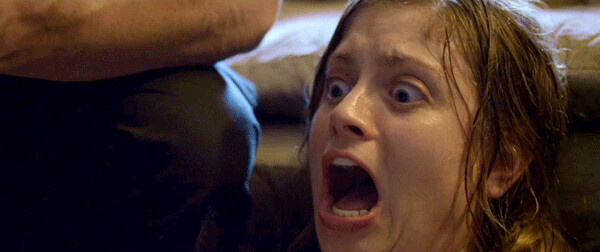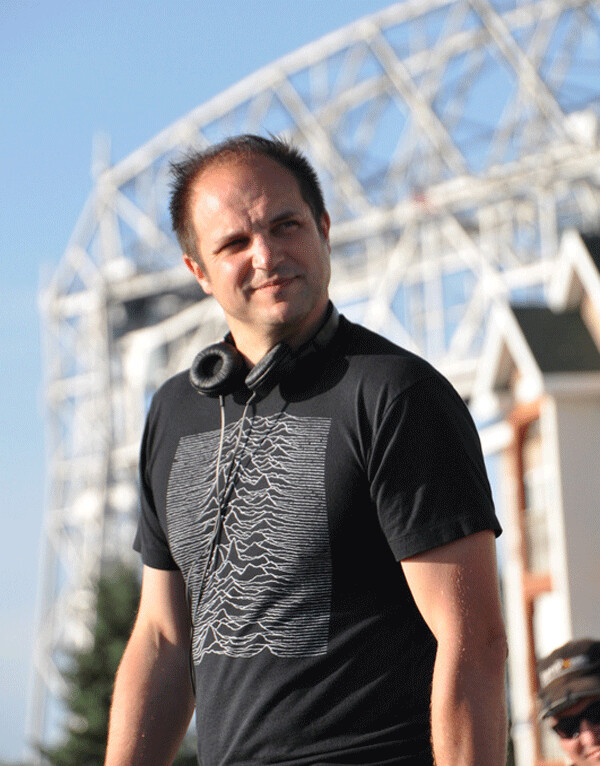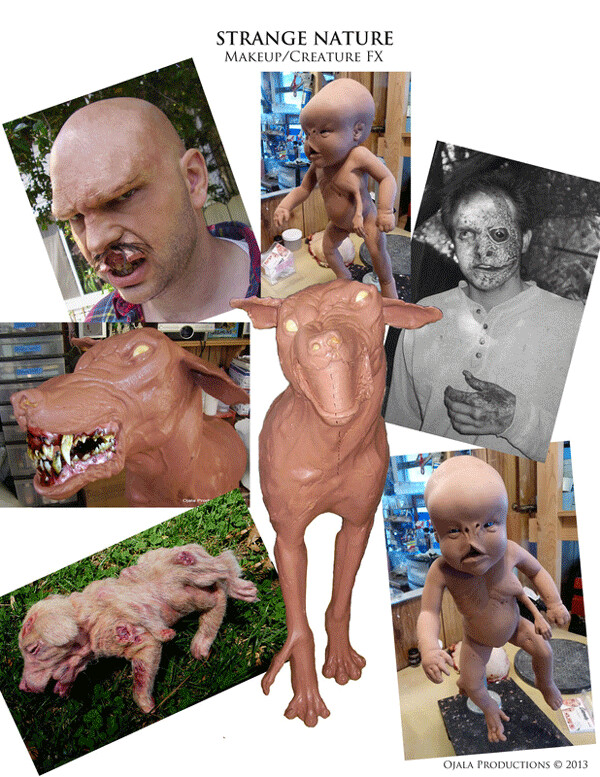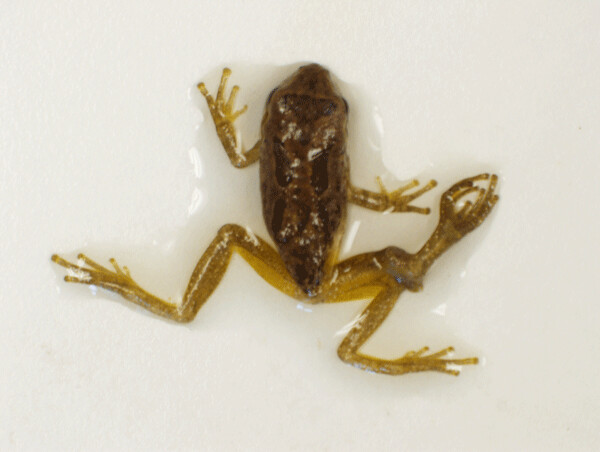News & Articles
Browse all content by date.

“If this thing happens only to animals that live near the water, we’re good.”
“Kim, we are animals that live near the water.”
Scene from “Strange Nature”
A locally filmed horror movie hits the big screen at Zinema Oct. 21. So great is the anticipation — and well it should be, since the film has been 15 years in the making — that advance tickets sold out for the first showing.
Writer, co-producer and director Jim Ojala, who also created the makeup and creature effects, is a 1995 graduate of Duluth Central High School. He learned filmmaking through Public Access Community TV in Duluth and, with a group of friends, created the gross-out horror comedy series “My Three Scums.” Based on that oeuvre, he landed an internship in New York City with Troma Entertainment, best known for the “Toxic Avenger” films. Then he moved to Los Angeles, where he now resides, to work as a special makeup artist on major studio productions. He founded his own effects company in 2005.
“Strange Nature” is inspired by deformed frogs discovered in Minnesota in 1995, a phenomenon that has spread nationwide and is still not fully understood. The topic has only become more relevant with the passing years. The Reader recently interviewed Ojala.

Why’d the movie take so long?
Honestly, that’s independent filmmaking. Kickstarter was a drop in the bucket and we had to find independent investors. A lot of it’s self-financed. You get a job, you do another little piece of the film and you get a job and keep moving forward.
How have you been eating this whole time?
I’ve had a good client base for my makeup and creature effects business, Ojala Productions, which I have in North Hollywood. That’s really what allowed me to make this film the way I wanted to make it and to survive. If I had just been doing a 9 to 5 for somebody, never in a million years would I have been able to make this movie. Having my own business allowed me the time and then the little bumps of money along the way to keep the whole project going, without having to make any compromises or really having to answer to anybody else. And I’m super-fortunate because that’s the only time in my career that’s going to happen.
Where has your work shown up?
On the horror Shudder Channel through American Movie Classics, we had a show last year called “The Core,” which was a really awesome horror movie talk show. We had everybody on from Elijah Wood to Glenn Danzig, Leigh Wannell, and I was co-host and co-producer of that show, and I also took you behind the scenes in every episode and showed how famous special effects in horror films were done. And then we do a lot of stuff for the Tim & Eric Show, Comedy Bang Bang and music videos.
Those creatures effects, the animatronics, how did you learn to do all that?
It’s really just over time. That was one of the big benefits of my early days in LA and New York where I could jump-skip in effects studios, really big ones. I worked on “Hellboy II” and “Where the Wild Things Are” and “Buffy the Vampire Slayer” and all those projects. You get little bits of knowledge working on all those because you work with masters of the field and you learn the best, quickest and most cost-effective ways to do things.

Do you do any CGI (computer-generated imagery) or rely mainly on puppets?
It’s all practical. Everything in my field is all practical, real sculpted prosthetics and puppets, all of it, whether it’s an exploding head or a cute little puppy, it’s all a real thing. Sometimes we work with CG houses. We did this sci-fi show called “Miss 2059” for Verizon’s channel Go90, and that was like a lot of aliens and stuff like that, but a lot of effects that we incorporated were practical effects. And that’s cool. I’m totally for that because we can work together with those two departments. Then you can truly make anything happen.
When did you really start making this film?
We started with a publicity event at the Norshor Theatre in 2003. So this has been going on for 15 years that we’ve been trying to get this movie made. It’s been a major labor of love. And we’ve shot little pieces along the way, like in 2006-2007 we shot a nightmare sequence in the film, shot it all on 16mm film. So we would have a little piece of time while we’re trying to raise the money and talk to investors and production companies. We would be building makeup creature effects on our own dime for one scene that could be a standalone. Or do promos or whatever we could do. During all those years we never sat around waiting for the money. We would just keep going as we were pursuing the money.
Did you have any problem with, say, the 11-year old actor growing too old for the part?
Anything that involved main characters we never filmed until we actually got the money to make the movie in 2014. Everything before that would be a standalone sequence or an insert. We started reaching out to the scientific community and they were actually really supportive because they feel kind of screwed over by the news media and the government, brushed under the carpet because these cases of these deformed frog outbreaks are still happening and it’s not really considered that important. They were really relieved that someone was making a film that revolved around that. We actually got one of the leading U.S. ecologists on our side as a consultant (Dr. Pieter Johnson of the University of Colorado, deformedfrogs.org) and through that connection we actually have the real deformed frogs in the film, live. So we would get a piece like that and shoot close-up inserts of the frogs and stuff like that and then make sure we perfectly match them later on when we have the money to make the rest of the film. There were a lot of pieces that were shot as early as 2005-2006 that ended up in the final film.

I remember in 2012 one of the scientists on deformed frogs wrote a book about the research and how it got squelched. (Peril in the Pond by Judy Helgen)
I read as many books as I could when I was researching. In 2001 all the funding got cut for the Minnesota Pollution Control Agency and then it kind of squandered where no agency was funded for any more of that research. It’s still happening. In 2013 they found a population in Oregon that was 100-percent deformed. Every single frog they pulled out of this wetland had some kind of malformation. That’s never happened in history. That was just in 2013, this thing started happening in ‘95, so who knows where it’s going in the big picture.
All this time they never figured out what causes it.
We have a lot of theories, but nothing’s been proven 100 percent across the board. With the current climate it seems like environmental matters are really taking a back seat. It just felt like a good time to try to say something like this that would hopefully stand out among other things. (Note: According to Dr. Johnson’s website, “Scientific research suggests that amphibian malformations can be caused by a variety of abiotic and biotic agents in the environment. It is likely that many of these factors work together to cause abnormalities in amphibians, e.g., parasite infection and chemical toxins in the water.”)
What’s your plan for distributing the film?
We have a domestic distributor, ITN, that is putting the film out on Redbox, WalMart, Amazon. We did a limited theatrical run in Los Angeles, and then we’ll have the one Duluth and one in Grand Rapids, and then we have foreign sales territory by territory worldwide. When you’re a film this size you’re on your own as far as promoting, marketing, all that stuff. It’s just us, just a few people trying to get the word out. The more people who can spread the word and check the film out, and going to things like RottenTomatoes.com, or even leaving a review on Amazon, makes the world of difference. Because at the end of the day, in this current day, this is what matters on making a film this size survive.
There will be an encore premiere of “Strange Nature” at Zinema 7 p.m. on Monday, Oct. 22. Ojala and producer Beth Meadows will attend for a Q & A. The film is also scheduled to show at 9 p.m. Tuesday through Thursday, Oct. 23-25.
| Tweet |


